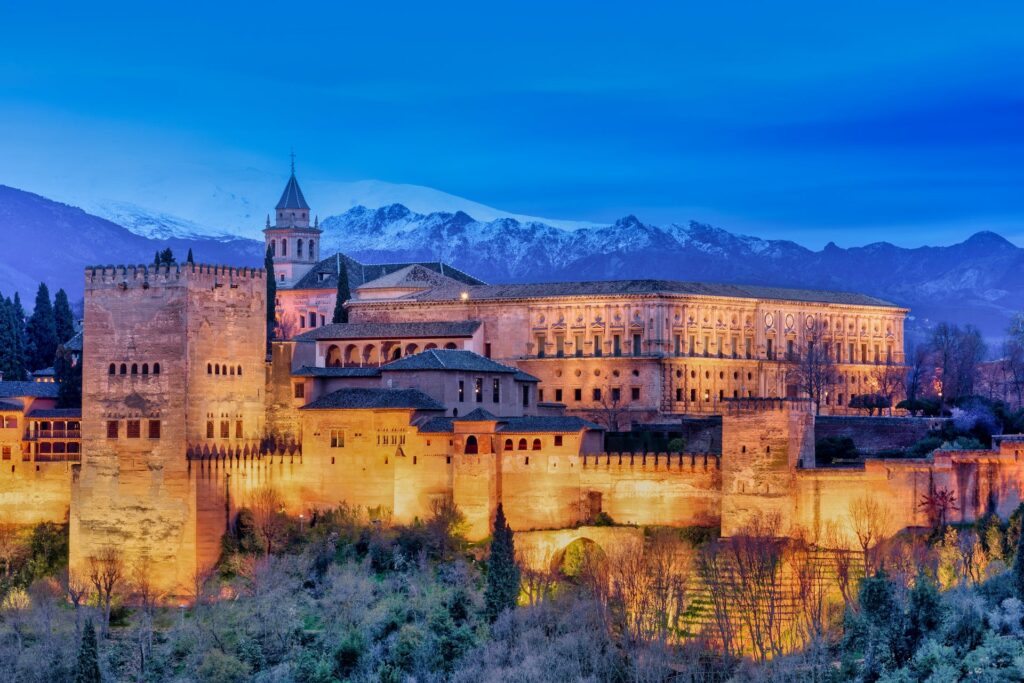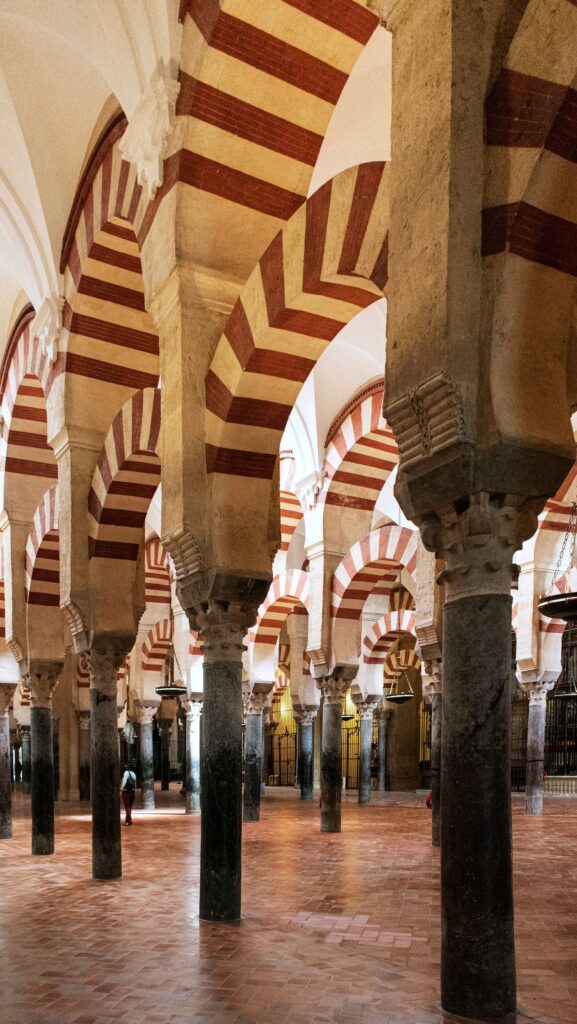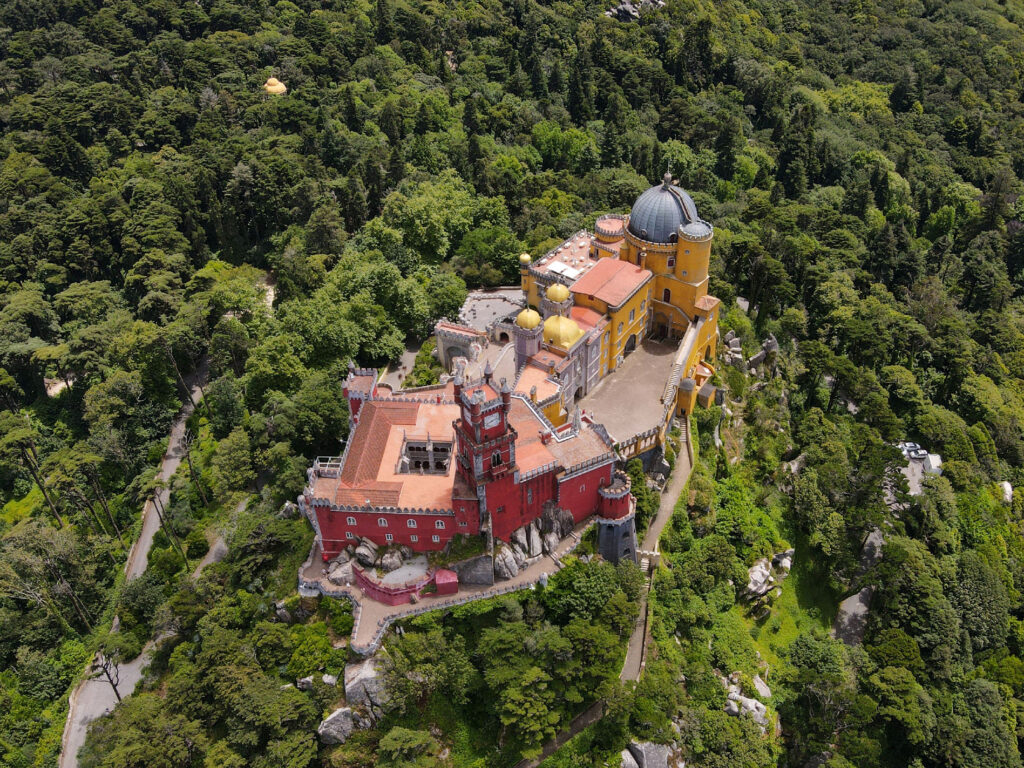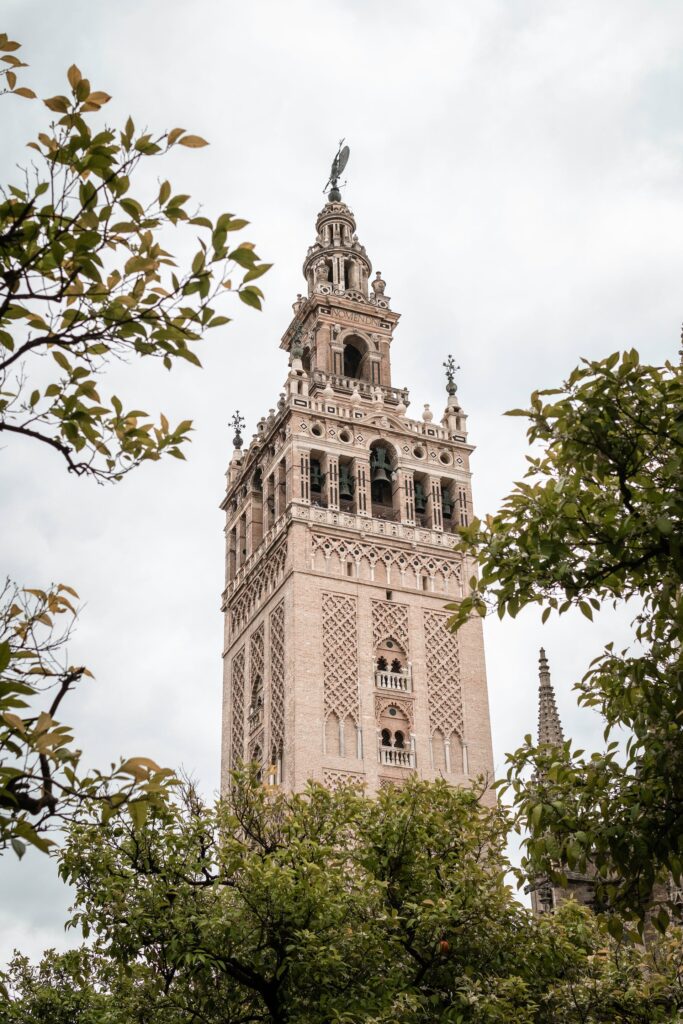Arab architecture in Spain and Portugal is one of the most important and richest in the world. Its influence can be seen in the architecture of both countries, from the most emblematic buildings to the most everyday ones.
Introduction to Arab Architecture in Spain and Portugal
Arab architecture arrived in the Iberian Peninsula with the Muslim conquest in the 8th century. Muslims settled in the region for more than 700 years, and during that time their architecture had a great influence on the local culture.
The earliest influences of Arabic architecture can be seen in the buildings constructed during the period of Umayyad occupation (711-1031). During this period, mosques, palaces and fortresses were built that combined elements of Roman, Byzantine and Arabic architecture.
Over time, Moorish architecture in the Iberian Peninsula developed and acquired its own unique characteristics. Arab architects used a variety of decorative elements and construction techniques to create buildings that were both beautiful and functional.
Unique characteristics of Arabic Architecture
Arab architecture in the Iberian Peninsula is characterised by a number of unique elements, the most important of which are the following:
Ornamental elements:
The decorative elements of Arabic architecture are some of its most distinctive features. These elements are used to create intricate and harmonious patterns that fill buildings with life.
Geometric motifs are the most common in Arabic architecture. These motifs are used to create repetitive patterns that can be simple or complex. The most common geometric motifs are squares, rectangles, triangles and circles.
Floral motifs are another common decorative element in Arabic architecture. These motifs are used to create lush patterns reminiscent of nature. The most common flowers in Arabic architecture are lotus flowers, orange blossoms and hibiscus flowers.
Calligraphic motifs are also an important decorative element in Arabic architecture. These motifs are used to write verses from the Qur’an or religious phrases. Arabic calligraphy is a very sophisticated art form and can be used to create elaborate decorative patterns.
Tiles are also an important decorative element in Moorish architecture. Tiles are used to create geometric, floral or calligraphic patterns. The most common tiles in this architectural style are cuerda seca tiles, basin tiles and zellige tiles.
Other common decorative elements in Arabic architecture include plasterwork, stucco, mosaics and wood inlay.
Construction techniques:
Arab architects used a variety of innovative construction techniques to create robust and elegant buildings. Some of the most important techniques used in Arab architecture include the following:
The horseshoe arch: The horseshoe arch is a characteristic element of Moorish architecture. This arch is characterised by its curved shape that opens at one point. The horseshoe arch is used to create large and luminous spaces.
The muqarnas vault: The muqarnas vault is a stone vault that is formed by a series of decorative elements in the shape of a star. The muqarnas vault is used to create spaces of great ornamental richness.
The half-orange dome: The half-orange dome is a dome that has the shape of a half-orange. The half-orange dome is used to create spaces with a great sense of height.
Arch system: The arch system is a building technique that uses a series of arches to support a roof or vault. The arch system is used to create spaces with a sense of spaciousness.
Load-bearing walls: Load-bearing walls are walls that support the weight of a building. Load-bearing walls are used in Arab architecture to create spaces with great solidity.
Cultural influences:
Arab architecture in the Iberian Peninsula reflects the cultural influences of the various peoples that inhabited the region. Roman, Byzantine and Christian elements can be seen in Moorish buildings, creating a unique synthesis of styles.
- Roman elements can be seen in Moorish architecture in the form of round arches, columns and capitals.
- Byzantine elements can be seen in Arab architecture in the form of the domes and mosaic vaults.
- Christian elements can be seen in the Moorish architecture in the form of pointed horseshoe arches, bell towers and Christian decorative elements.
Emblematic examples of Arab Architecture
The Iberian Peninsula is home to some of the most emblematic examples of Moorish architecture. Among the most outstanding are the following:
The Alhambra in Granada
The Alhambra is a palace complex and fortress that was built by the Nasrid sultans of Granada. It is one of the most visited monuments in Spain and a perfect example of Moorish architecture at its finest.

The Mosque-Cathedral of Cordoba
The Mosque-Cathedral of Cordoba is a religious building that was built by the Muslims during the Umayyad period. It is one of the most important examples of Islamic architecture in the world.

The Palácio Nacional da Pena in Sintra
The Palácio Nacional da Pena is a romantic palace that was built in the 19th century. It combines elements of Moorish, Renaissance and medieval architecture.

Arab architectural styles in the Peninsula
Arab architecture in the Iberian Peninsula developed over the centuries, giving rise to a variety of styles. The main Arabic architectural styles on the Peninsula are as follows:
Umayyad style:
The Umayyad style developed during the Umayyad period (711-31). It is characterised by the use of horseshoe arches, muqarnas vaults and half-domes. Some of the most outstanding examples of the Umayyad style in the Iberian Peninsula are the Mosque-Cathedral of Córdoba, the Great Mosque of Seville and the Giralda Mosque of Seville.

Giralda Mosque in Seville
Nasrid style:
The Nasrid style developed during the Nasrid period (1232-1492). It is characterised by the use of geometric and floral motifs, as well as by the abundance of tiles. Some of the most outstanding examples of the Nasrid style in the Iberian Peninsula are the Alhambra in Granada, the Generalife in Granada and the Palacio de Comares in Granada.

Comares Palace in Granada
Mudéjar style:
The Mudéjar style developed during the Reconquest (11th-15th centuries). It is characterised by the combination of Christian and Arab architectural elements. Some of the most outstanding examples of the Mudéjar style in the Iberian Peninsula are Toledo Cathedral, Segovia Cathedral and the Alcázar of Segovia.

Segovia Cathedral
Legacy and Preservation
Arab architecture in the Iberian Peninsula is a cultural and artistic legacy of great importance. Arab buildings are among the most visited in Spain and Portugal, and are a testimony to the cultural richness of the region.
In recent years, significant efforts have been made to restore and conserve the Arab buildings of the Iberian Peninsula. These efforts have made it possible to preserve this cultural heritage for future generations.
Influence on Contemporary Architecture
Arab architecture has had a significant influence on contemporary architecture. Architects around the world have been inspired by the decorative elements and construction techniques of Arab architecture to create modern buildings that combine functionality and beauty.
Examples of the influence of Arabic architecture on contemporary architecture include the use of horseshoe arches and other building elements, geometric and floral motifs in decoration, and the use of materials such as plaster, stucco and tiles.
Conclusions
Arab architecture in the Iberian Peninsula is one of the most important and richest in the world. Its influence can be seen in the architecture of both countries, from the most emblematic to the most everyday buildings, and architects from all over the world have been inspired by its construction and ornamental methods.
This style has left us with a cultural and artistic legacy of great importance. Arab buildings are among the most visited in Spain and Portugal, and are a testimony to the cultural richness of the region.
Moorish architecture is an inexhaustible source of inspiration for architects all over the world. Its decorative elements and construction techniques are still relevant today, and continue to inspire architects to create beautiful and functional buildings.

